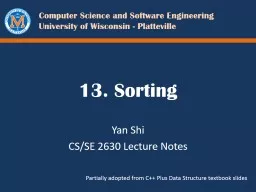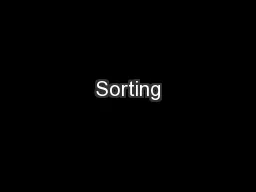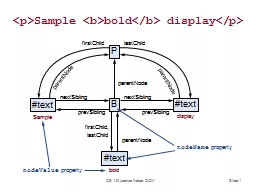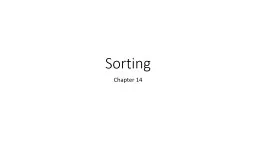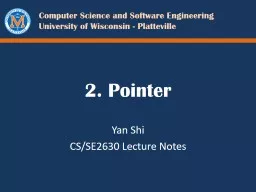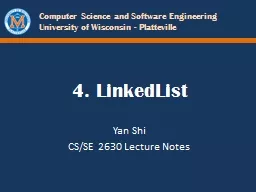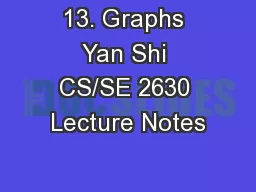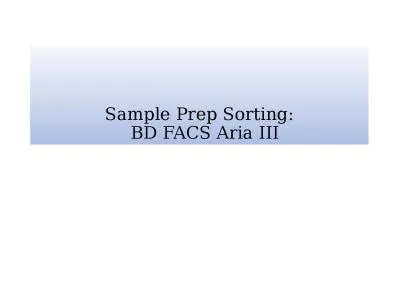PPT-13. Sorting Yan Shi CS/SE 2630 Lecture Notes
Author : natalia-silvester | Published Date : 2018-12-05
Partially adopted from C Plus Data Structure textbook slides Basic Sorting Algorithms Selection sort select the current smallest to put in the current first position
Presentation Embed Code
Download Presentation
Download Presentation The PPT/PDF document "13. Sorting Yan Shi CS/SE 2630 Lecture ..." is the property of its rightful owner. Permission is granted to download and print the materials on this website for personal, non-commercial use only, and to display it on your personal computer provided you do not modify the materials and that you retain all copyright notices contained in the materials. By downloading content from our website, you accept the terms of this agreement.
13. Sorting Yan Shi CS/SE 2630 Lecture Notes: Transcript
Download Rules Of Document
"13. Sorting Yan Shi CS/SE 2630 Lecture Notes"The content belongs to its owner. You may download and print it for personal use, without modification, and keep all copyright notices. By downloading, you agree to these terms.
Related Documents

